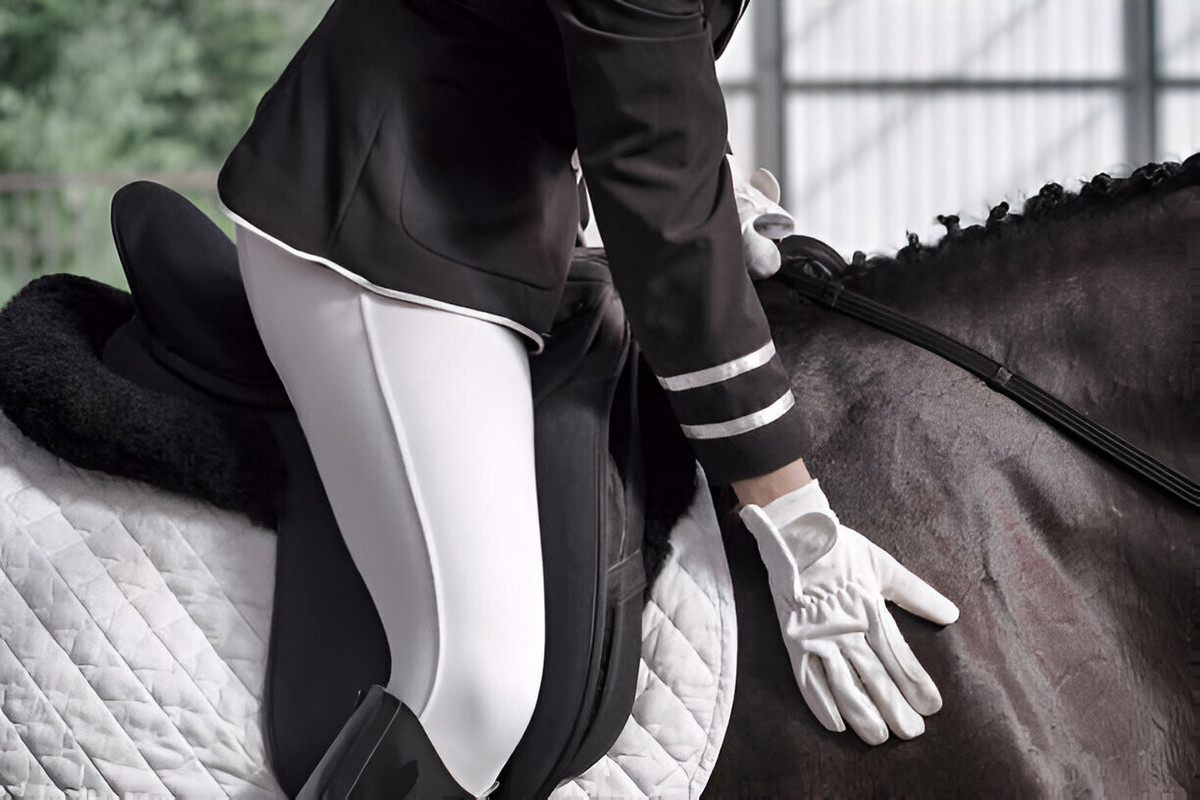In the world of equestrian sports, control, balance and discipline are key attributes that define success. One significant factor that influences these attributes is the saddle, the heart of rider-horse connection. Particularly in Dressage, where precision and grace are demanded from both horse and rider, the right saddle plays a pivotal role.
Understanding the importance of a well-fitted saddle cannot be overstressed. In simple terms, a perfectly fitted dressage saddles assures the comfort of both rider and horse, maximising performance by allowing for the perfect seat, balance and overall posture. Therefore, saddle selection is crucial, as a poorly fitted saddle can result in issues ranging from impaired performance to health problems for both rider and horse.

Understand Your Horse
Every horse is unique, each with specific body shape and characteristics. Hence, it is important to first understand your horse’s specific needs before setting off your saddle hunt. Knowing details such as the horse’s wither height, back length and overall conformation can make saddle selection process less daunting.
With an understanding of your horse’s shape, you'll also be better equipped to recognise the signs of an ill-fitting saddle, which could range from behavioral changes like resistance to saddling, discomfort while riding, changes in gait, or physical signs like rub marks, abnormal shedding, or sores. Catching these signs early can spare your horse unnecessary pain and also save you from possible riding discomfort and safety risks.
Anatomy of a Dressage Saddle
Understanding the components of a dressage saddle is another essential step towards making a well-informed decision. The main parts of the saddle include the tree, which is the base or 'skeleton', the seat, which accommodates the rider, and the panels that offer cushioning between the horse and the saddle.
Each component has a role to play. For instance, the tree size which is generally divided into narrow, medium or wide, should match the horse's back while the seat size, which averages from 16 to 18 inches should fit the rider’s hip and thigh length. The panels made often from wool, foam or gel provides a buffer to the horse’s back, dissipating the weight of the rider evenly.
The Right Fit: Not Just About the Rider
A perfectly fitted saddle ensures optimal comfort for both the rider and horse, enhancing performance and reducing the risk of injury. A ill-fit saddle can be too tight, restricting the movement of the horse, or too loose, causing instability for the rider.
Finding the right fit involves precise measurements and close attention to detail. The saddle should sit level on the horse’s back, the gullet should provide clearance over the spine, and there should be even pressure throughout the length of the panels. Trialling the saddle both unmounted and mounted is a must-do to determine if the saddle is a potential fit.

Materials Matter: Choosing the Right Dressage Saddle Materials
From traditional leather to modern synthetic fibres, the materials used in dressage saddles vary greatly. Each material type has its own advantages and drawbacks. For instance, leather saddles, though expensive and requiring regular maintenance, offer a superior feel and last for years, while synthetic saddles are lightweight, less expensive and require minimal upkeep.
It is not just about personal preference but sustainability too. Leather's durability could mean fewer saddle replacements over time while the ease of maintenance with synthetics can save on the environmental costs of cleaning products. It’s all about finding the balance between what works best for you, your horse and considering the environmental footprint.
Invest in Quality Consider Brands and Manufacturers
Investing in a saddle from a reputable manufacturer can save you money and trouble in the long run. A cheap saddle might seem like a bargain at first, but it can end up costing more if it causes discomfort or injury to you or your horse down the line.
Brands like Albion, Passier, and Stubben, to name a few stand out in the dressage world for their quality handiwork, innovative design and excellent customer service. These companies not only offer superior products but also customisation options and support to help find the perfect fit for your horse.
Regular Saddle Checkups & Adjustments
Investing in a well-fitting saddle doesn’t mean the work is done. Regular saddle checkups are necessary as horses change shape over time due to factors like work regime, age or diet.
Learning how and when to make necessary saddle adjustments is a part of dressage riding. For instance, reflocking the panels or adjusting the girth straps may need to be done every 6-12 months depending upon the usage and horse changes. Regular check-ins with a saddle fitter are a worthwhile investment to keep your saddle in top condition and your horse comfortable.
Conclusion
In dressage, a small tweak can translate into significant performance changes, and that couldn't be more true with saddle fit. It is a blend of science and art, a combination of understanding your horse’s unique needs, being knowledgeable about the saddle structure, materials and brands, and making regular adjustments as needed.
Remaining committed to making informed choices when it comes to saddle selection can change your dressage ride from straining to seamless, putting you and your horse on the path to success. As the old saying goes, it's the horse and rider's comfort that determines the perfect saddle, but the knowledge shared here will help you make an informed choice.

No comments:
Post a Comment